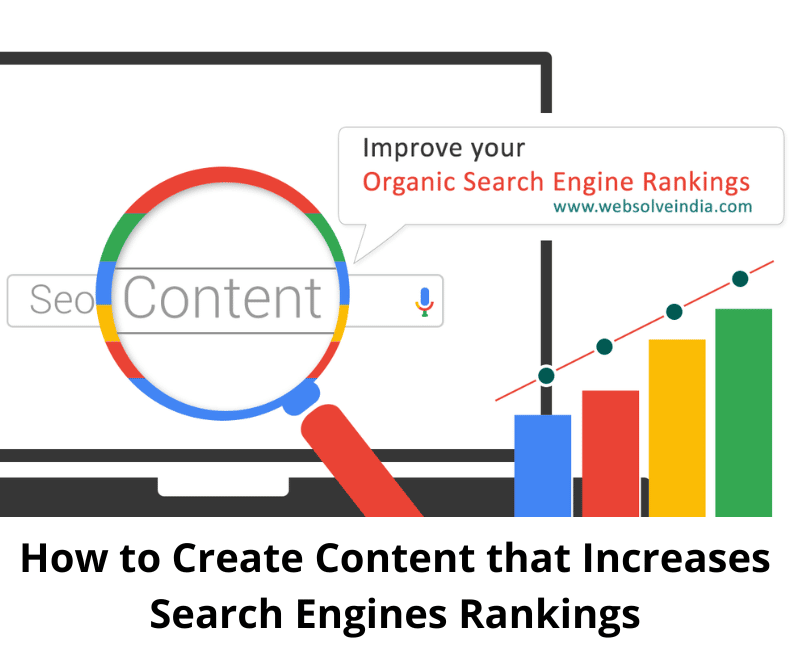Introduction to ChatGPT: A Powerful Tool for Marketing
In today’s digital age, businesses are constantly looking for new and innovative ways to market their products and services. One of the latest tools to gain attention is ChatGPT, an AI-powered language model that can generate human-like responses to text prompts. In this article, we’ll provide an overview of ChatGPT and highlight some of the key features that make it a useful tool for marketing.
- What is ChatGPT?
ChatGPT is an artificial intelligence language model that was developed by OpenAI. It uses machine learning algorithms to understand natural language and generate responses that are similar to those of a human. The name “GPT” stands for “Generative Pre-trained Transformer,” which refers to the technology behind the model.
ChatGPT has been trained on a massive dataset of text from the internet, including books, articles, and websites. This allows it to generate responses that are not only grammatically correct but also contextually relevant. ChatGPT is constantly learning and improving as it processes more data and interacts with more users.
2. How does ChatGPT work?
ChatGPT works by taking a text prompt and generating a response based on the context of the prompt. The model is trained to understand language at a deep level, which allows it to generate responses that are both coherent and relevant.
One of the key features of ChatGPT is its ability to generate human-like responses. This means that users interacting with ChatGPT may not even realize that they are talking to a machine. The model can handle a wide range of prompts and can generate responses on a variety of topics.
3. Why is ChatGPT useful for marketing?
ChatGPT is a useful tool for marketing because it can help businesses engage with customers in a more natural and conversational way. For example, businesses can use ChatGPT to create chatbots that can handle customer queries, offer product recommendations, and even process orders. This allows businesses to provide a more personalized and efficient customer experience.
Another key feature of ChatGPT is its ability to generate content ideas and even write blog posts or articles. This can be useful for businesses that are looking to create high-quality content quickly and efficiently.
Additionally, ChatGPT can be used for data analysis and to gain insights into customer behavior. By analyzing customer data, businesses can identify trends and make data-driven decisions about their marketing strategies.
Conclusion
ChatGPT is a powerful tool that has a wide range of applications in marketing. Its ability to generate human-like responses and handle a wide range of prompts makes it a valuable asset for businesses looking to engage with customers in a more conversational way. Additionally, its ability to generate content ideas and provide insights into customer behavior makes it a useful tool for businesses looking to improve their marketing strategies. As ChatGPT continues to evolve and improve, it’s likely that we’ll see even more innovative uses for this AI-powered language model in the future.
ChatGPT and Customer Engagement: How AI Can Revolutionize Customer Service
In today’s fast-paced business world, providing excellent customer service is essential for retaining customers and growing a loyal following. One of the latest tools that businesses are using to improve their customer engagement is ChatGPT, an AI-powered language model that can generate human-like responses to text prompts. In this article, we’ll explore how ChatGPT can help businesses engage with their customers more effectively, and how it can be used to create chatbots that can handle customer queries, offer product recommendations, and even process orders.
- What is ChatGPT, and how does it work?
As a quick recap, ChatGPT is an artificial intelligence language model that was developed by OpenAI. It uses machine learning algorithms to understand natural language and generate responses that are similar to those of a human. The model is constantly learning and improving as it processes more data and interacts with more users.
To use ChatGPT for customer engagement, businesses can create chatbots that are powered by the model. These chatbots can be integrated with messaging platforms such as Facebook Messenger, WhatsApp, or Slack, allowing customers to interact with them in a conversational way.
2. How can ChatGPT improve customer engagement?
One of the key benefits of using ChatGPT for customer engagement is that it can help businesses provide a more personalized and efficient customer experience. By using chatbots that are powered by ChatGPT, businesses can handle customer queries and provide product recommendations in a conversational way, without the need for human intervention.
For example, a customer who is interested in purchasing a new laptop could interact with a chatbot that is powered by ChatGPT. The chatbot could ask the customer a series of questions about their needs and preferences, and then generate a list of recommended laptops based on the customer’s responses. This provides a more personalized experience for the customer and can help them make a more informed purchasing decision.
Another benefit of using ChatGPT for customer engagement is that it can help businesses save time and resources. By using chatbots to handle customer queries and orders, businesses can free up their customer service teams to focus on more complex issues that require human intervention.
Conclusion
ChatGPT is a powerful tool that can revolutionize the way businesses engage with their customers. By using chatbots that are powered by the model, businesses can provide a more personalized and efficient customer experience, while also saving time and resources. As ChatGPT continues to evolve and improve, it’s likely that we’ll see even more innovative uses for this AI-powered language model in customer engagement and other areas of business.
ChatGPT and Personalization: How AI Can Help Businesses Create Personalized Experiences
Personalization has become a buzzword in the marketing world, and for good reason. Today’s consumers expect personalized experiences that are tailored to their needs and preferences, and businesses that fail to provide this level of personalization risk losing customers to competitors who do. One of the latest tools that businesses are using to personalize their marketing efforts is ChatGPT, an AI-powered language model that can generate human-like responses to text prompts. In this article, we’ll explore how ChatGPT can help businesses create personalized experiences for their customers, and how it can be used to personalize marketing messages, offers, and product recommendations.
- What is ChatGPT, and how does it work?
As a quick recap, ChatGPT is an artificial intelligence language model that was developed by OpenAI. It uses machine learning algorithms to understand natural language and generate responses that are similar to those of a human. The model is constantly learning and improving as it processes more data and interacts with more users.
To use ChatGPT for personalization, businesses can integrate the model into their marketing efforts, allowing them to create personalized experiences for their customers.
2. How can ChatGPT help businesses personalize their marketing efforts?
There are several ways that ChatGPT can be used to personalize marketing messages, offers, and product recommendations:
- Personalized Messages: Businesses can use ChatGPT to create personalized messages for their customers. For example, a business could send a personalized email to a customer that addresses them by name and references their previous purchases or browsing history.
- Personalized Offers: ChatGPT can be used to generate personalized offers that are tailored to each customer’s preferences. For example, a clothing retailer could use ChatGPT to generate personalized discount codes for each customer based on their style preferences.
- Personalized Product Recommendations: ChatGPT can analyze a customer’s previous purchases, browsing history, and other data to generate personalized product recommendations. For example, a beauty retailer could use ChatGPT to recommend skincare products that are specifically tailored to each customer’s skin type and concerns.
- Personalized Chatbots: Finally, businesses can use ChatGPT to create chatbots that provide personalized assistance to customers. These chatbots can help customers find the products they’re looking for, answer their questions, and provide recommendations based on their preferences.
Conclusion
Personalization is becoming increasingly important in marketing, and ChatGPT is a powerful tool that businesses can use to create personalized experiences for their customers. By using the model to generate personalized messages, offers, and product recommendations, businesses can improve customer engagement and increase loyalty. As ChatGPT continues to evolve and improve, it’s likely that we’ll see even more innovative uses for this AI-powered language model in personalization and other areas of business.
ChatGPT and Content Marketing: How AI Can Help Generate Ideas, Headlines, and Articles
Content marketing has become a critical strategy for businesses looking to reach and engage with their target audience. However, coming up with fresh and compelling ideas for content can be a challenge. This is where ChatGPT, an AI-powered language model, can be a game-changer. In this article, we’ll explore how ChatGPT can be used to support content marketing efforts, including generating ideas, headlines, and even writing blog posts or articles.
- What is ChatGPT, and how does it work?
As a quick recap, ChatGPT is an artificial intelligence language model that was developed by OpenAI. It uses machine learning algorithms to understand natural language and generate responses that are similar to those of a human. The model is constantly learning and improving as it processes more data and interacts with more users.
To use ChatGPT for content marketing, businesses can integrate the model into their content creation process, allowing them to generate ideas, headlines, and even complete articles.
2. How can ChatGPT help businesses with content marketing?
There are several ways that ChatGPT can be used to support content marketing efforts:
- Idea Generation: ChatGPT can be used to generate new ideas for content. By providing the model with a topic or keyword, it can generate a list of potential topics or angles to explore.
- Headline Generation: Headlines are critical for capturing the attention of potential readers. ChatGPT can be used to generate compelling headlines that are tailored to the content and audience.
- Article Writing: ChatGPT can also be used to write complete articles or blog posts. While the model’s output may require some editing and refining, it can provide a solid foundation and save writers time and effort.
- Content Optimization: ChatGPT can analyze existing content to identify opportunities for optimization. For example, it can recommend changes to improve the readability or SEO optimization of an article.
Benefits of using ChatGPT for content marketing
Using ChatGPT for content marketing can provide several benefits, including:
- Efficiency: ChatGPT can save writers time by generating ideas, headlines, and even complete articles.
- Consistency: ChatGPT can help ensure consistency in tone and style across different pieces of content.
- Creativity: ChatGPT can help spark new ideas and approaches to content creation, resulting in more creative and engaging content.
- Scalability: ChatGPT can help businesses scale their content creation efforts by generating ideas and content at a faster pace.
Conclusion
Content marketing is a critical strategy for businesses looking to reach and engage with their target audience. However, creating fresh and compelling content can be a challenge. ChatGPT, an AI-powered language model, can be a valuable tool for businesses looking to generate new ideas, headlines, and even complete articles. By integrating ChatGPT into their content creation process, businesses can improve efficiency, consistency, creativity, and scalability. As ChatGPT continues to evolve and improve, it’s likely that we’ll see even more innovative uses for this AI-powered language model in content marketing and other areas of business.
ChatGPT and Data Analysis: How AI Can Help Businesses Gain Insights into Customer Behavior
Data analysis has become an essential part of modern business operations. By analyzing customer data, businesses can gain insights into customer behavior and preferences, which can inform marketing strategies, product development, and more. ChatGPT, an AI-powered language model, can be a powerful tool for businesses looking to analyze customer data and make data-driven decisions. In this article, we’ll explore how ChatGPT can be used for data analysis and to gain insights into customer behavior.
- What is ChatGPT, and how does it work?
As a quick recap, ChatGPT is an artificial intelligence language model that was developed by OpenAI. It uses machine learning algorithms to understand natural language and generate responses that are similar to those of a human. The model is constantly learning and improving as it processes more data and interacts with more users.
Digital Wellness – The impact of technology on Mental Health, Relationships, and Overall Well-Being
To use ChatGPT for data analysis, businesses can integrate the model into their data analytics tools or platforms, allowing them to analyze customer data, identify trends, and make data-driven decisions.
2. How can ChatGPT help businesses with data analysis?
There are several ways that ChatGPT can be used to support data analysis efforts:
- Customer Data Analysis: ChatGPT can analyze customer data, including demographic information, browsing behavior, purchase history, and more. By analyzing this data, businesses can gain insights into customer behavior and preferences, which can inform marketing strategies, product development, and more.
- Trend Identification: ChatGPT can identify trends in customer data, such as changes in customer behavior, product preferences, and more. This can help businesses anticipate changes in customer behavior and adjust their strategies accordingly.
- Sentiment Analysis: ChatGPT can analyze customer feedback, including reviews, comments, and social media posts, to identify sentiment and gauge customer satisfaction. This can help businesses identify areas for improvement and make data-driven decisions to improve customer satisfaction.
- Predictive Analytics: ChatGPT can be used to develop predictive models based on customer data, which can help businesses anticipate customer behavior and make data-driven decisions.
Benefits of using ChatGPT for data analysis
Using ChatGPT for data analysis can provide several benefits, including:
- Efficiency: ChatGPT can help businesses analyze customer data more quickly and efficiently, allowing them to make data-driven decisions in a timely manner.
- Accuracy: ChatGPT can analyze customer data with a high degree of accuracy, minimizing the risk of errors or misinterpretations.
- Scalability: ChatGPT can help businesses scale their data analysis efforts, analyzing large volumes of customer data in a short period.
- Innovation: ChatGPT can help businesses identify new insights and trends in customer data, leading to innovation and competitive advantage.
Digital Wellness – The impact of technology on Mental Health, Relationships, and Overall Well-Being
Conclusion
Data analysis is a critical component of modern business operations, and ChatGPT, an AI-powered language model, can be a valuable tool for businesses looking to gain insights into customer behavior. By integrating ChatGPT into their data analytics tools and platforms, businesses can analyze customer data more efficiently and accurately, identify trends and sentiments, and make data-driven decisions. As ChatGPT continues to evolve and improve, it’s likely that we’ll see even more innovative uses for this AI-powered language model in data analysis and other areas of business.








